Rome is renowned for its fountains. Although I doubt anyone knows for certain the total number of fountains in the city, the number of major fountains is estimated at 65. Not surprisingly, I didn’t see all of them but I did see a few and today’s post will feature photographs of four of Rome’s more prominent fountains. I begin with the Trevi Fountain, likely the best known. It is the largest Baroque fountain in the city and the most beautiful in the world. A traditional legend holds that if visitors throw a coin into the fountain, they are ensured a return to Rome. We complied and tossed in a few.
The fountain is 26,30 m high (85.28 feet) and 49,15 wide (160.72 feet). Every day it spills 80.000 cubic meter of water (2,824,800 cubic feet). It has been featured in several movies including Three Coins in the Fountain (1954), La Dolce Vita(1960) and Roman Holiday (1953).
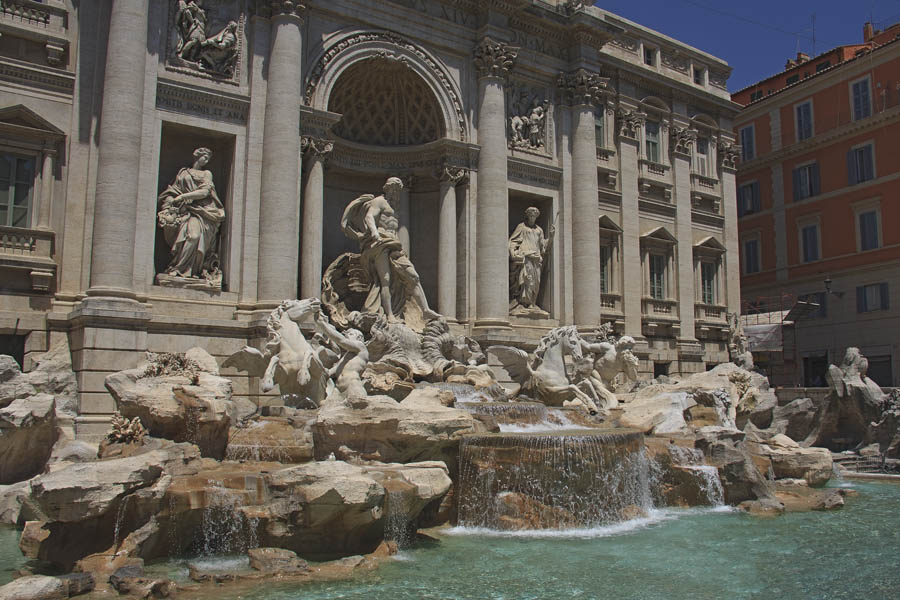
This photograph was taken in the early afternoon on a bright sunny day, with lots of light. This one, like all my holiday photos was taken without a tripod. To ensure no perceptible “camera shake” I set the camera for very fast shutter speeds. This particular shot was taken with a shutter speed of 1/400th sec. and an aperture of f5.6. Unlike yesterday’s post (Evan Thomas Creek), water movement is “frozen” instantaneously, revealing fascinating patterns in the water, not easily visible to the human eye. Look at this close-up of the central cascade of water.
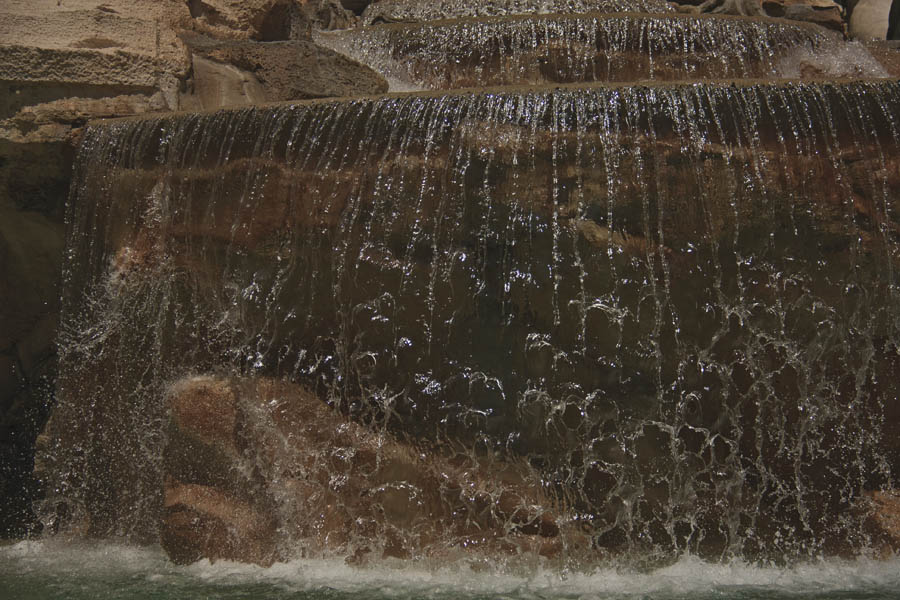
The turbulence is such that it causes the stream to separate, creating a lacy appearance.
The next photograph, taken at the Piazza Colona Fountain illustrates another interesting flow phenomenon. In this case, you can see the falling sheet of water begin to bulge outward and then the bulges begin to fall apart as they reverse direction, inward. This occurs over a short distance that can be described as the transition between laminar flow (above) and turbulent flow (below). What the heck does that mean? Skip the next paragraph if you don’t really wish to know!
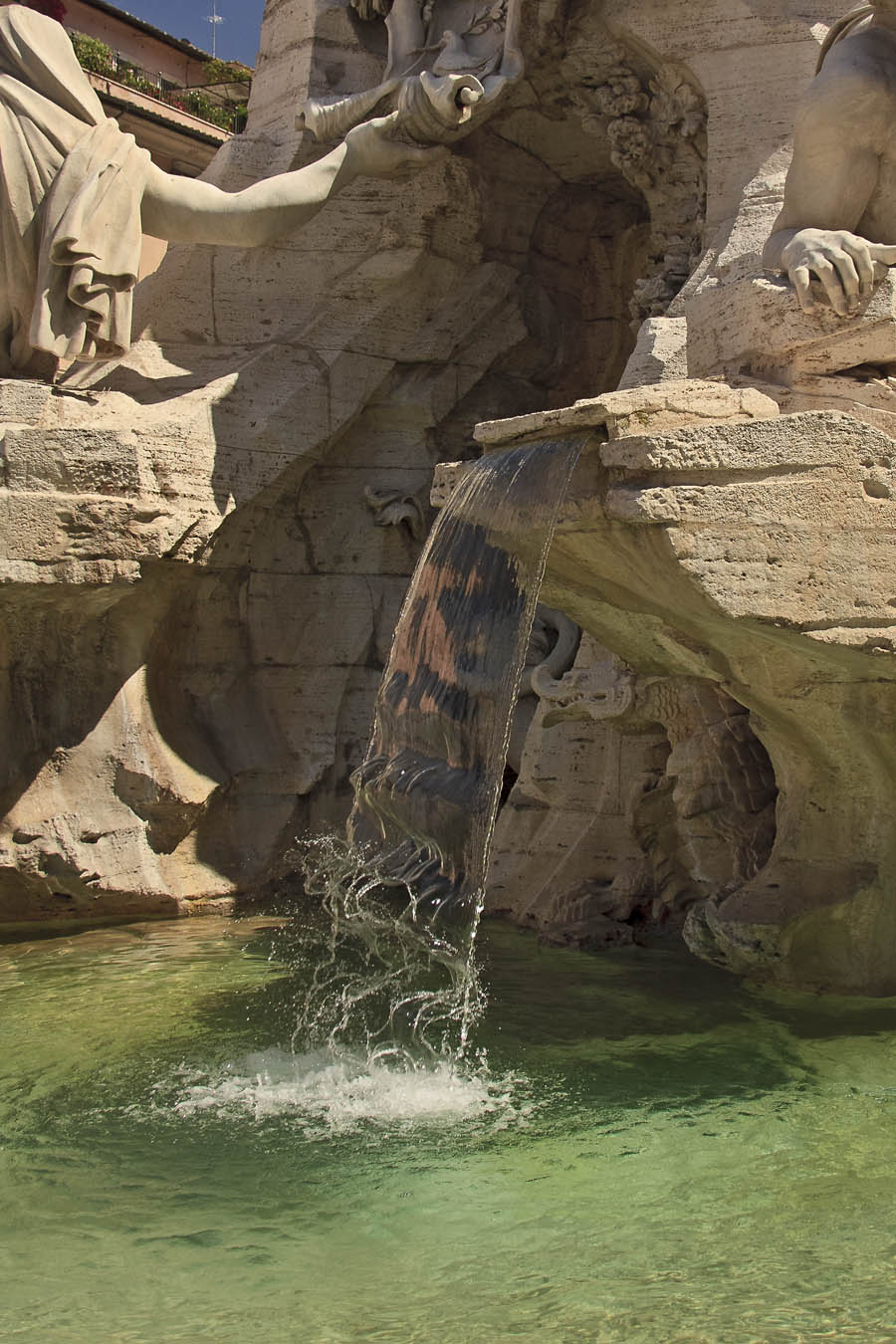
Laminar flow, sometimes known as streamline flow, occurs when a fluid flows in parallel layers, with no disruption between the layers. At low velocities the fluid tends to flow without lateral mixing, and adjacent layers slide past one another like playing cards. There are no cross currents perpendicular to the direction of flow, nor eddies or swirls of fluids. In laminar flow the motion of the particles of fluid is very orderly with all particles moving in straight lines parallel to the direction of flow. Flowing over the edge of the wall, the water is moving slowly. As it falls, it accelerates increasing friction with the surrounding air. This friction creates shear forces within the fluid, generating the cross currents, eddies and swirls characteristic of turbulent flow. By the time it reaches the water in the basin below, the stream’s flow has become turbulent.
The instability in the stream during the transition creates the wavering motion that makes this a fun photograph. I did not see this motion until I saw it in the photograph. With a shutter speed of 1/2000th sec., the camera was able to “freeze” the motion to make it visible.
The last two pictures were also taken at high shutter speeds (1/2000th sec.) These fountains are different from the previous two in that they are spraying their streams outward. With a very fast exposure, the individual water droplets can be seen very clearly, “frozen” in motion. Again, not easily visible with the human eye.
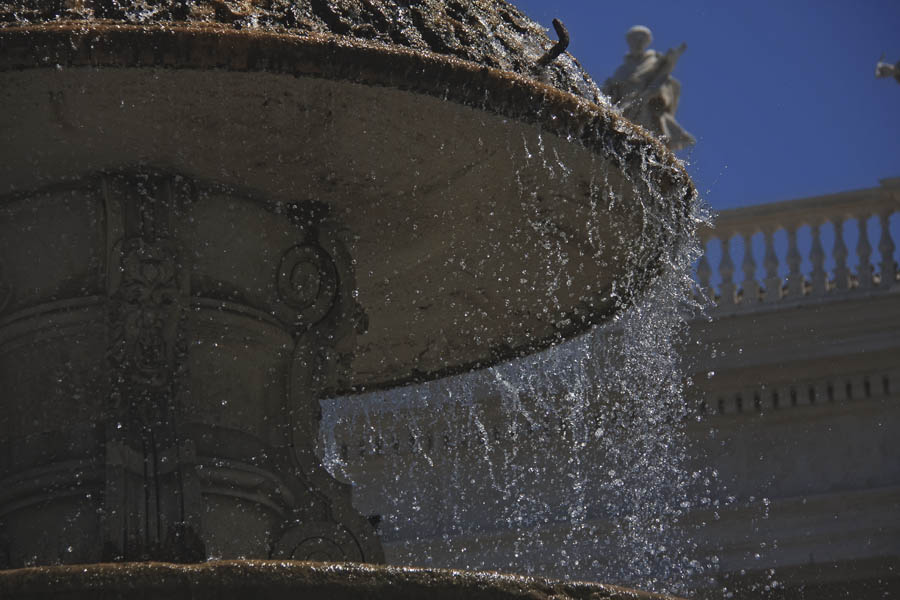
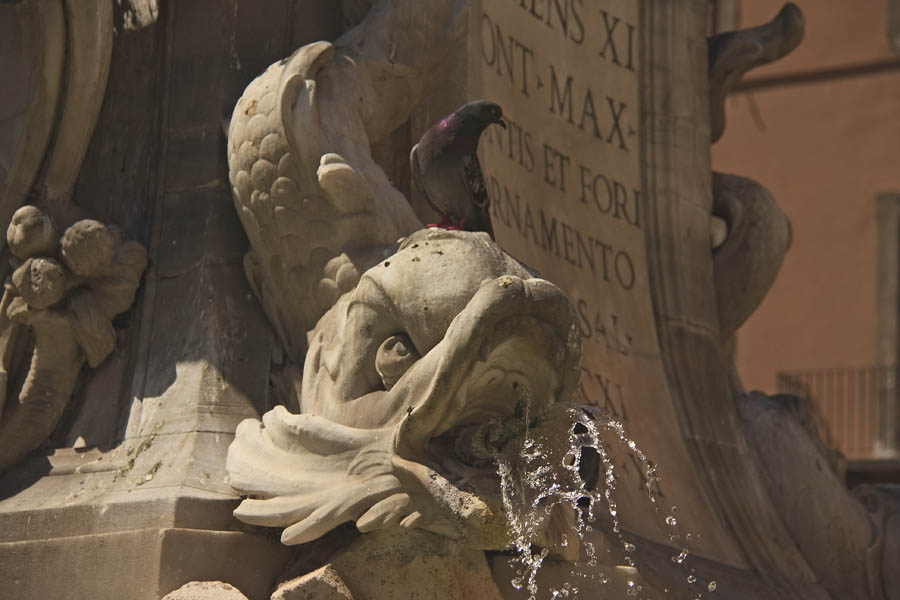
With my emphasis on the flow of water (that’s what fountains do), I did not intend to overlook the great architecture and artistry of the fountains’ structures. I’ve tried to capture a sense of that as well in these photographs. If I have diverted your attention more toward the water, simply go back and focus on the stonework. It’s very beautiful work.
